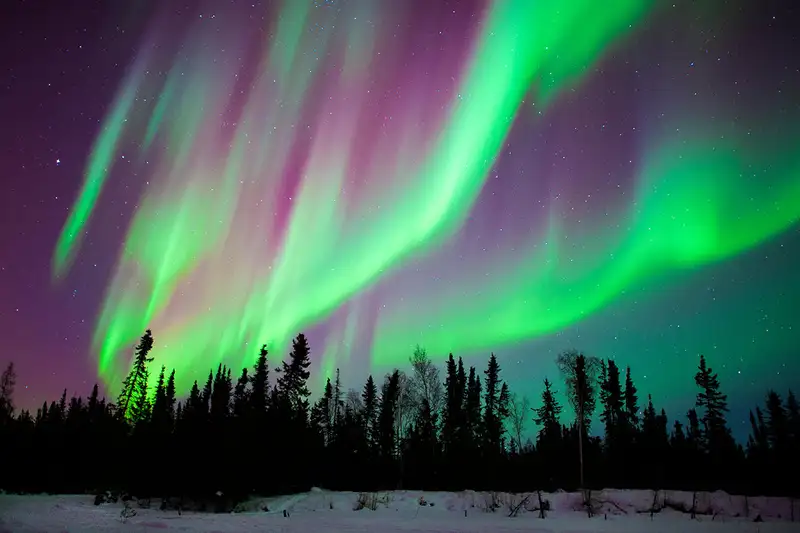For those who associate the Northern Lights, or Aurora Borealis, exclusively with the polar regions, the idea of witnessing this breathtaking celestial display in states like New Mexico and Texas might seem implausible. However, recent reports and astronomical insights suggest that residents of these seemingly unlikely locations might be in for a rare treat – a dance of colors illuminating their night skies.
A phenomenon usually associated with high-latitude regions, the Northern Lights are caused by the interaction between charged particles from the sun and the Earth’s magnetic field. While typically confined to the northern hemisphere, instances of the Aurora Borealis making appearances further south have intrigued and captivated sky gazers.
In a surprising turn of events, Texas has witnessed glimpses of the Northern Lights, challenging conventional expectations. The southern state, not traditionally known for this natural wonder, has joined the ranks of regions where the auroras have made a cameo appearance. Residents in Texas have reported awe-inspiring sightings, defying the geographical expectations usually associated with this cosmic spectacle.
In neighboring New Mexico, anticipation is building for a celestial light show. The state is gearing up for a potential encounter with the Northern Lights, particularly in areas such as Taos and Rio Rancho. Astronomers explain that the visibility and intensity of the auroras are influenced by solar activity. During periods of heightened solar activity, including solar storms, the likelihood of witnessing more vibrant and expansive displays increases.

Read more:
- California Lawmaker Proposes Speed Limit Technology to Curb Road Deaths
- Tragedy Strikes as Young Dancer Dies from Mislabeling of Peanuts in Cookies
- New Concealed Carry Law Denied by Another Northern California Count
- U.S. Takes Action to Safeguard Whales Around Offshore Wind Farms
Astronomers like Melanie Templet from the Rio Rancho Astronomical Society have affirmed the authenticity of the phenomenon in the region. Past sightings and predictions point to the end of March as a promising timeframe for the Northern Lights to grace New Mexico’s skies once again.
The unusual occurrence has sparked interest among sky watchers, prompting inquiries about the best methods to track and observe the auroras. Tools like online trackers offer enthusiasts the ability to monitor solar activity and predict when and where the Northern Lights might be visible. As New Mexico awaits the potential cosmic display, it raises the question of whether Texas, too, might share in this celestial experience.
For those who have longed to witness the mesmerizing dance of colors but balked at the idea of venturing to the Arctic Circle, New Mexico emerges as an unexpected yet promising destination. The prospect of the Northern Lights illuminating the night sky over the state opens up opportunities for unique experiences, including camping under the celestial spectacle.
As anticipation builds for this cosmic event, it underscores the dynamic and ever-changing nature of our planet’s interactions with the cosmos. The intersection of solar activity and Earth’s magnetic field, though typically associated with polar regions, has the potential to cast its luminous glow over unexpected landscapes. For residents of New Mexico and Texas, the possibility of encountering the Northern Lights serves as a reminder of the wonders that the universe occasionally bestows upon the most unexpected corners of our world. As the night skies prepare to unveil their celestial masterpiece, eager observers await the spectacle that may unfold above them.

